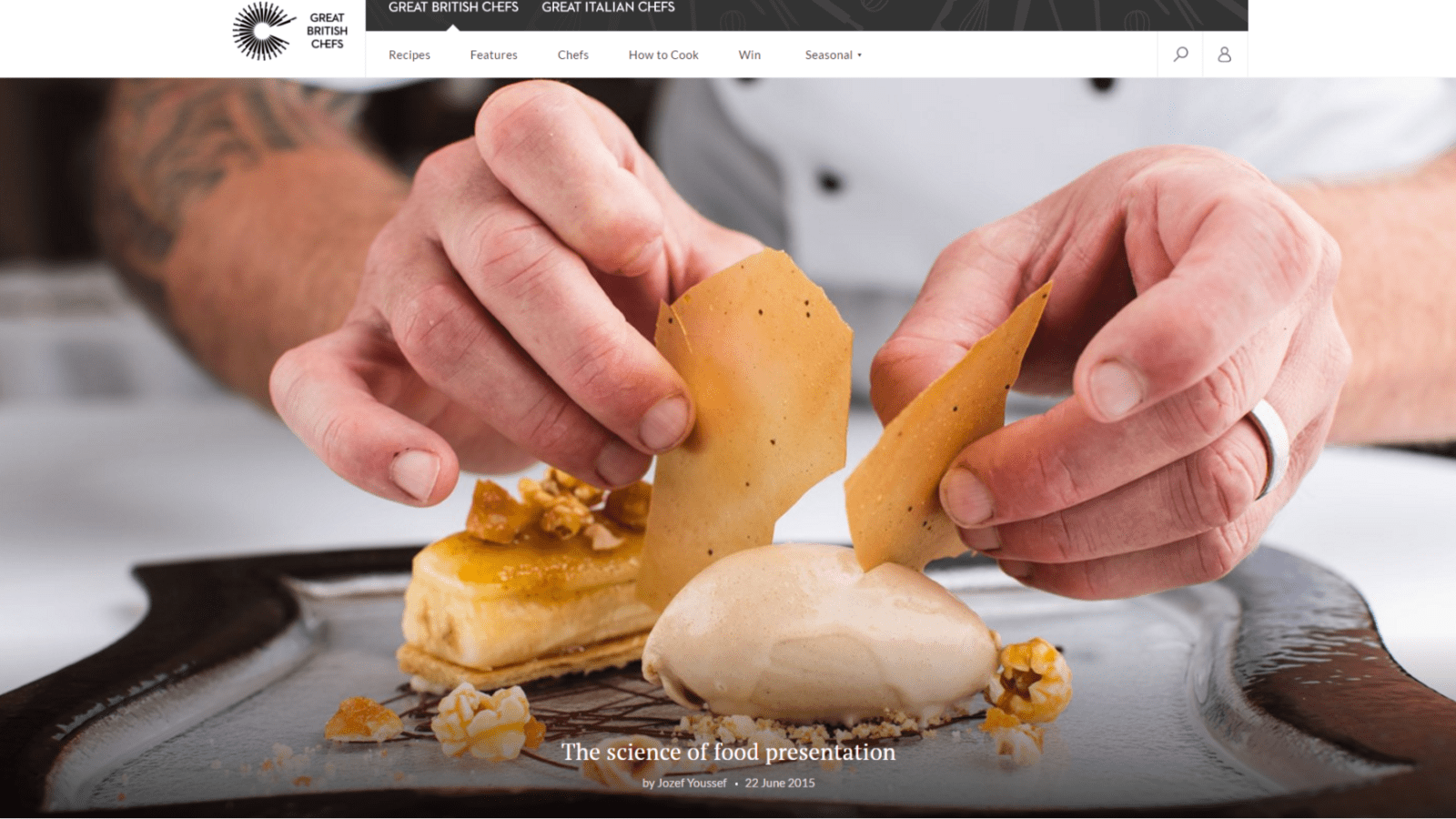
ARTICLE BY JOZEF YOUSSEF ON GBC – THE SCIENCE OF FOOD PRESENTATION
“WE EAT FIRST WITH OUR EYES.”
With the rise of Instagram, food porn and food photography, we have seen a rise in edible flowers, asymmetrical plating and food bowls. What does the research say about our preferences when it comes to plating? Is this something that we can apply at home? For the first article in his multisensory exploration series with Great British Chefs, our founder Jozef Youssef explores the science of food presentation.
THE SCIENCE OF FOOD PRESENTATION
by Jozef Youssef 22 June 2015
In the first of our articles with the founder of collaborative gastronomic project, Kitchen Theory, we take a look at how the plating of food affects our experience of eating it.
At Kitchen Theory, we are continuously looking at the sensory attributes of the dining experience or what we call ‘neurogastronomy’. Research in this field looks at how all our senses (sight, smell, taste, hearing and touch) are involved in eating, dining and general food appreciation. It also explores the connections and interactions between the senses in relation to our understanding and associations with food. What is it that makes us appreciate food? Is our enjoyment of food based solely on our sense of smell and taste? There is a little more to it than that . . .
As one of our academic collaborators, Professor Barry Smith, Founding Director of the Centre for the Study of the Senses, says ‘food has many dimensions . . . how it is presented, its aesthetics, how we enjoy it, how it works on us and how we grow it are all important elements which contribute to how we enjoy food.’
Over the past few years, many members of the press, as well as guests who attend our Kitchen Theory multi-sensory dining events, ask if any of the sensory aspects of our dinners can be used by the home chef. My answer is always, ‘Of course!’
As part of our mission to share knowledge in the field of neurogastronomy, we are very excited to work with Great British Chefs on a series of articles aimed at helping chefs (both amateur and professional) to understand the principles behind our sensory research and how to use them in their own cooking.
We begin with the sense of sight. The sentiment ‘we eat first with our eyes’ is widely held by many cultures around the world and one that I think we all intuitively understand. But is it true? And are there any key rules or principles for food presentation that the majority agree to be more appealing?
For the purpose of this article, we will look at three aspects in which we have conducted research: colour and taste associations, asymmetric plating verses central plating and, finally, the angle at which foods are presented
COLOUR AND TASTE ASSOCIATION

